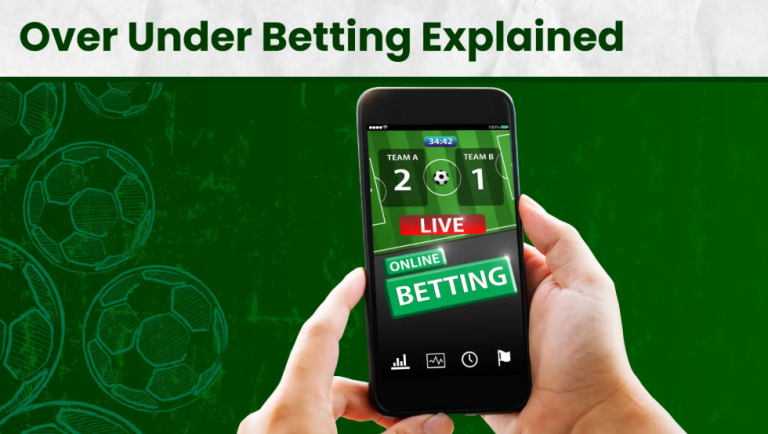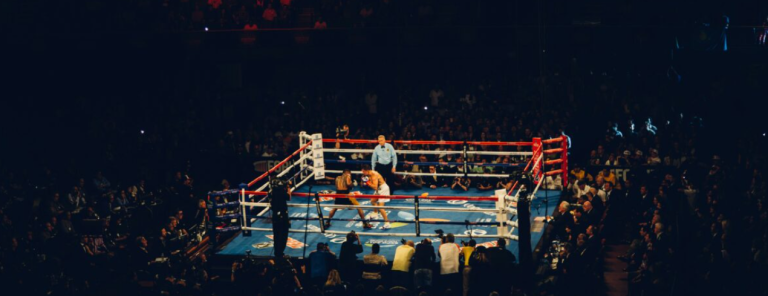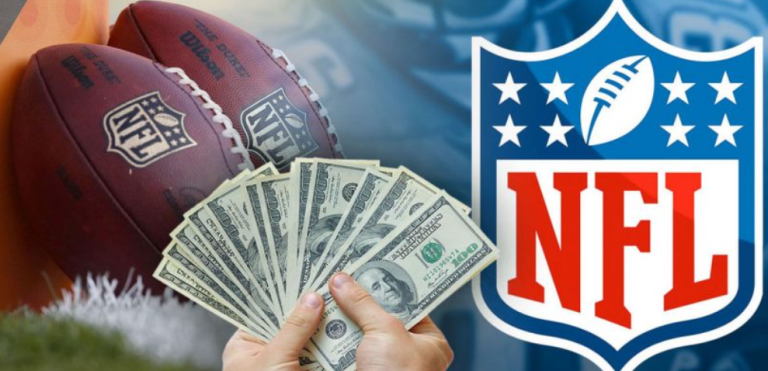The risks of chasing losses in betting
Losing streaks happen to every bettor. The real danger starts when you try to win everything back immediately through bigger, riskier bets. This destructive pattern, known as chasing losses in sports betting, destroys more bankrolls than bad luck ever could. Understanding why bettors fall into this trap and learning practical strategies to avoid it can mean the difference between long-term success and financial disaster.
What does chasing losses mean in betting 🎯
Recovery gambling refers to the dangerous practice of placing larger or more frequent wagers specifically to recoup money you’ve already lost. Rather than accepting the setback and following your original staking strategy, you escalate your wager amounts hoping to break even quickly. This behavior stems from emotional decision-making rather than strategic thinking.
When a punter experiences a $50 deficit on Monday night football, rational thinking suggests analyzing what went wrong and moving forward with the standard staking approach. However, chasing losses in sports betting leads that same bettor to place a $200 stake on Tuesday’s game, abandoning their usual $25 unit size. The logic seems simple: one big win erases the previous loss. The reality proves far more complicated.
Why it’s a common psychological trap for bettors in the US 💭
US sports wagering culture creates perfect conditions for deficit-recovery patterns. With games happening almost every day across NFL, NBA, MLB, and NHL, opportunities to “get even” are constantly available. Round-the-clock access via mobile sportsbook platforms makes snap decisions easier than ever.
- 🧠 Instant gratification culture – Americans expect quick results, making the slow grind of disciplined wagering feel frustrating
- 📱 Mobile accessibility – Platforms like BetWhale deliver staking opportunities directly to your fingertips, eliminating the natural reflection window
- 🏈 Daily action – Unlike European football leagues with weekly schedules, US sports provide constant wagering windows
- 💰 Credit-based betting – Numerous sportsbooks permit wagering past your available funds, digging deeper financial trenches
Let’s examine a typical scenario. John drops $50 backing the Lakers. Rather than absorbing this hit within his $500 monthly allocation, he immediately stakes $200 on the next NBA game. If he wins at -110 odds, he profits roughly $182, recovering his $50 loss plus $132 extra. But if he loses, he’s now down $250 from two bets – and the urge to chase intensifies. This is precisely how emotional betting behavior spirals out of control.
Why chasing losses is so risky ⚠️

The mathematics behind deficit pursuit prove merciless. Every time you increase your bet size beyond your planned units, you’re amplifying variance and reducing your margin for error. Professional bettors understand that no single bet should make or break your bankroll.
Risk compounds exponentially with each chase attempt. A standard wagering approach might risk 2-5% of your bankroll per play. During recovery mode, punters often stake 20-40% attempting to recoup deficits rapidly. This creates a situation where a few bad outcomes can completely wipe out your staking capital.
Rapid bankroll depletion 💸
The speed at which bankrolls disappear during chase sequences shocks most bettors. What took weeks to build can vanish in a single evening when discipline breaks down. Let’s examine how quickly money disappears when you abandon bankroll protection strategies.
A $1,000 bankroll following proper risk management might survive 100+ bets at $10-20 per wager. That identical bankroll pursuing recovery typically withstands fewer than 10 plays once stake amounts surge to $100-200. The math is unforgiving: lose three $200 bets and 60% of your roll is gone.
- Starting bankroll: $1,000
- Unit size: $20 (2% of bankroll)
- Betting strategy: Consistent stakes regardless of results
- After 100 bets (55 wins, 45 losses at -110): $1,045 remaining
- Largest drawdown: Never exceeded $850
- Starting bankroll: $1,000
- Initial unit: $20
- Betting approach: Doubles stake after every loss
- Results: Lost $20, $40, $80, $160, then $320
- After just 5 bets: $380 remaining (62% loss)
- Outcome: Forced to abandon action for two months
This case study demonstrates why risk management in betting matters more than winning percentage. Derek maintained his bankroll despite winning only 55% of bets. Charlie destroyed 62% of his bankroll in five bets, even though he might be a skilled handicapper otherwise.
Psychological traps behind chasing losses 💭
Understanding the mental mechanisms that drive loss-chasing helps you recognize and resist these urges. Your mind sabotages your best interests when downturns spark emotional reactions instead of logical evaluation.
Loss aversion – why losing hurts more than winning 😣
Psychological research consistently shows that humans feel the pain of loss roughly twice as intensely as the pleasure of equivalent gains. Losing $100 hurts more than winning $100 feels good. This imbalanced psychological reaction drives powerful urges to erase or prevent deficits, even via reckless staking decisions.
When you lose a bet, your brain releases stress hormones that cloud judgment. The discomfort becomes so acute that reaching breakeven feels urgently necessary – more important than following your staking blueprint. This is why chasing losses psychology remains one of the most studied topics in gambling research.
Loss aversion in gambling manifests in several ways:
- ✅ Overvaluing money already wagered (sunk cost fallacy)
- ✅ Feeling personally offended by losses
- ✅ Treating wins as expected and losses as unacceptable
- ✅ Remembering losses more vividly than wins
- ✅ Making increasingly desperate bets to “get even”
Gambler’s fallacy – expecting balance after losses ♻️
Many bettors believe that after a losing streak, winning bets are “due” to balance things out. This flawed grasp of probability and variance drives escalated stakes during downswings – precisely when caution matters most.
The gambler’s fallacy assumes that past results influence future independent events. In reality, if you flip a coin and get five tails in a row, the sixth flip still has exactly 50% chance of landing tails. Each bet operates independently unless you’re exploiting a genuine edge in the market.
Sports wagering involves some skill, but short-term results remain heavily influenced by variance. A bettor might have excellent long-term winning probability but experience brutal short-term losing streaks. Increasing bet sizes during these natural variance swings creates the recovery betting trap that destroys bankrolls.
Overconfidence bias in betting 🚫
After analyzing a matchup extensively, many punters convince themselves they’ve discovered a “lock” – a guaranteed winner that will erase prior deficits. This overconfidence often leads to the largest and most damaging chase bets.
Real talk: if professional bettors with decades of experience and advanced statistical models still lose 45% of their bets, your “lock” probably isn’t as secure as you think. Every elevated wager should stem from genuine edge and bankroll expansion, never from the impulse to erase prior deficits.
- ⚠️ Are you betting to recover a specific previous loss? – If yes, don’t bet
- ⚠️ Is this bet size larger than your normal unit? – If yes, reconsider
- ⚠️ Are you feeling angry, frustrated, or desperate? – If yes, take a break
- ⚠️ Did you make this betting decision within 5 minutes of your last loss? – If yes, wait 24 hours
- ⚠️ Would you make this exact bet if you were currently winning? – If no, skip it
This checklist helps identify tilt betting definition moments – when emotions override strategy. Tilt originated in poker circles but translates perfectly to sportsbook situations where frustration hijacks sound judgment.
Financial consequences of chasing losses 💰
Beyond the immediate money lost on bad bets, chasing losses in sports betting creates cascading financial problems that extend into your personal life. Bills get paid late, credit cards max out, and relationships suffer when wagering capital comes from household money.
Small stakes vs large stakes: how quickly bankroll disappears 💵
Bigger bets don’t just add risk – they multiply it. When variance compounds, doubling your stake often quadruples your actual danger of going broke.
Take a $2,000 bankroll as example:
Conservative $20 bets (1% risk):
- Survives 150+ bets at 45% win rate
- Lasts several months
- Low stress, sustainable
Chase betting at $200 (10% risk):
- Survives only 12-15 bets
- Could vanish in one weekend
- Extreme psychological pressure
Regarding how to manage winnings and losses in nba betting? – crypto requires extra discipline. The virtual format makes downturns feel abstract, while instant transactions fuel snap judgments. Always convert crypto to USD equivalents for tracking purposes and never increase stakes just because “it’s only crypto.” That mental detachment is precisely why recovery wagering proves more perilous with cryptocurrency.
Setting a weekly vs monthly betting budget 📅
Budget framework dramatically impacts your capacity to resist deficit-recovery patterns. Monthly allocations create 30-day spans where early deficits trigger prolonged recovery spirals. Weekly budgets provide natural reset points that limit damage.
Benefits of weekly limits 📆
Weekly budgets split your monthly funds into four independent segments, creating automatic circuit breakers. Lose your Monday-Sunday allocation chasing losses? You must wait until the next week restarts. This mandatory pause stops the downward spiral that monthly budgets allow.
Seven-day reviews also sharpen your awareness. You spot patterns quickly and adjust before damage accumulates. Monthly check-ins come too late – bad habits already have 30 days to take root.
This approach limits chase damage to seven days maximum while keeping your total monthly spend identical. Four separate mini-campaigns beat one long stretch where early errors snowball into disaster.
Tools and apps to help manage your bankroll 🧰
Technology can be your ally in preventing loss-chasing behavior. Several apps and tracking systems help maintain discipline when emotions run high.
Bankroll management apps 📱
Contemporary wagering demands contemporary tools. These tools sync with your staking activity to deliver real-time feedback:
- 💡 BetTracker Pro – Logs every bet automatically, shows unit sizes versus bankroll percentage, and sends alerts when stake sizes exceed normal ranges ($4.99/month)
- 💡 Action Network – Tracks bets across multiple books, calculates true win rates accounting for juice, and provides detailed loss patterns (Free with premium options)
- 💡 Betting Journal – Manual entry system that forces you to write reasoning for every bet, creating psychological barrier against impulsive bets ($2.99/month)
- 💡 Responsible Gaming Apps – Most legitimate books including BetWhale offer built-in deposit limits, session time limits, and self-exclusion options (Free with account)
- 💡 Simple Spreadsheet – Google Sheets template tracking date, teams, odds, stake, result, and cumulative profit/loss (Free)
The key feature to look for: real-time stake size alerts. If your app notifies you immediately when placing a bet 3x your normal unit size, it creates a moment of reflection that can prevent disaster.
Strategies to avoid chasing losses 🛑
Concrete systems beat good intentions every time. Embed these tactics into your wagering routine before deficits strike, not afterward.
Stick to a unit system 📊
The unit system anchors discipline by making one unit equal 1-5% of your bankroll. Bet sizing becomes mechanical: standard plays get 1 unit, strong opportunities get 2 units, rare max confidence gets 3 units.
- For a $1,000 bankroll:
- 1 unit = $20 (2%)
- Regular NBA bet = 1 unit ($20)
- Strong edge spotted = 2 units ($40)
- Maximum conviction = 3 units ($60)
- Never exceed 3 units for any reason
This framework eliminates chase temptation automatically. Lose three straight bets? Your next wager still follows the 1-3 unit range based on game analysis, not emotional recovery needs.
James begins with $600 and a $200 loss limit (33% drawdown). His unit = $20.
- Monday: NFL loss, $20 (down $20)
- Tuesday: NBA loss, $40 (down $60)
- Wednesday: NHL loss, $20 (down $80)
- Thursday: Two losses, $40 total (down $160)
- Friday: NBA loss, $40 (down $200, STOP-LOSS HIT)
James immediately halts all action despite having $400 remaining. That remaining 67% survives the week. Without this automatic brake, he’d likely have chased harder with bigger stakes. The stop-loss kills chasing losses in sports betting behavior before it spirals.
Long-term betting success without chasing losses 🏆
Winning sports handicappers share a common trait: they view wagering as a marathon requiring consistency and patience. The objective isn’t erasing yesterday’s deficits – it’s sustaining positive expectancy across thousands of wagers.
Focus on value betting instead of recovery 💡
Value staking means placing wagers only when you believe the odds offered exceed the true probability of the outcome. A team might have a 55% chance of winning, but if the line gives them only 50% implied probability, that’s value worth backing regardless of your recent record.
This approach requires:
- ✅ Developing a process for evaluating true probabilities
- ✅ Comparing your assessment against market odds
- ✅ Betting only when you find positive expected value
- ✅ Accepting that value bets still lose frequently
- ✅ Trusting the process over long samples
Deficit-driven wagering does the opposite – it hunts for any play that might win, regardless of value. You might back underdogs at poor prices simply because they present larger potential payouts to offset deficits. This reverses the entire purpose of disciplined handicapping.
Strategy A – Consistent value betting
100 bets at $20 each = $2,000 total risked
Win rate: 54% (carefully selected value bets)
Wins: 54 × $18.18 profit = $981.72
Losses: 46 × $20 = -$920
Net result: +$61.72 profit (3.1% ROI)
Strategy B – Chase betting
10 bets at $200 each = $2,000 total risked
Win rate: 45% (desperate, low-value bets)
Wins: 4-5 × $181.82 profit = $727-909
Losses: 5-6 × $200 = -$1,000-1,200
Net result: -$273 to -$491 loss (14-25% negative ROI)
Both strategies risk the same $2,000 total, but the outcomes differ dramatically. Steady value wagering with disciplined stake sizing produces positive returns. Impulsive recovery-driven stakes create substantial deficits even when certain individual wagers hit.
Play smart, not desperate 🧭
Sports wagering rewards patience, discipline, and statistical thinking. Pursuing deficits embodies the antithesis of every principle. When you feel the urge to increase stakes after a loss, that’s precisely the moment to step back and reassess.
- 🎯 Accept variance as normal – Losing streaks happen to everyone, including sharp professional bettors who win long-term
- 📊 Track everything – You can’t manage what you don’t measure; detailed records reveal patterns you’d otherwise miss
- ⏸️ Take breaks – Taking breaks after downturns prevents the emotional spiral that fuels recovery-driven wagering
- 💰 Respect your limits – Both drawdown limits and unit sizes exist to safeguard your bankroll from yourself
- 🧘♂️ Develop emotional control – The best handicapping means nothing if poor emotional regulation destroys your bankroll
The framework you establish before downturns strike determines whether you weather slumps or succumb to them. Set your limits now. Choose your unit size today. Download tracking apps before placing your next bet. Future you, facing a tough loss, will thank present you for building these protective systems.
FAQ
What does it mean to “chase losses” in sports betting?
Escalating stake amounts to recoup prior deficits instead of following your blueprint. It’s emotion-fueled and creates deeper shortfalls.
Why is chasing losses considered dangerous?
It drains bankrolls fast and creates a spiral where each loss triggers more desperate bets.
How can I stop myself from chasing losses?
Use weekly budgets, fixed unit sizes, stop-loss limits, and bankroll tracking apps.
Are there apps that help prevent chasing behavior?
Yes – BetTracker Pro, Action Network, Betting Journal, and BetWhale’s built-in deposit limits and session timers.
Does chasing losses happen more often in crypto betting than in USD?
Yes, crypto feels less real and transactions are instant. Always track in USD equivalents.









